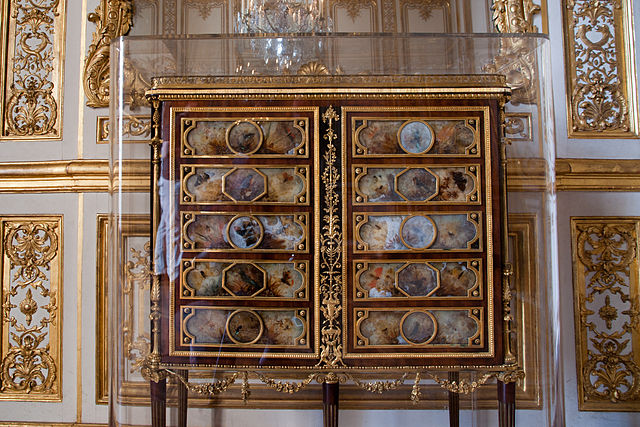Guillaume Beneman or Benneman was a prominent Parisian ébéniste, one of several of German extraction, working in the early neoclassical Louis XVI style, which was already fully developed when he arrived in Paris. Beneman arrived in Paris already trained; he was settled in the rue du Faubourg Saint-Antoine when he was received master in 1785 by royal command. He rapidly became the last of the royal cabinet-makers before the French Revolution, working under the direction of the sculptor-entrepreneur Jean Hauré, fournisseur de la cour.
commode à portes_musée national des Beaux-arts d'Argentine
médailler_petit appartement du Roi_Versailles
médailler 2_petit appartement du Roi_Versailles
secrétaire à abattant marqueté_Metropolitan Museum of Art
Louis XVI furniture is characterized by elegance and neoclassicism, a return to ancient Greek and Roman models. Much of it was designed and made for Queen Marie Antoinette for the new apartments she created in the Palace of Versailles, Palace of Fontainebleau, the Tuileries Palace, and other royal residences. The finest craftsmen of the time, including Jean-Henri Riesener, Georges Jacob, Martin Carlin, and Jean-François Leleu, were engaged to design and make her furniture.
Drop-front desk by Martin Carlin; oak veneered with tulipwood, amaranth, holly, and sycamore; six Sèvres soft-paste porcelain plaques and two painted tin plaques; gilt-bronze mounts; marble shelves; moiré silk (1776) Metropolitan Museum of Art.
Robert Adam bookcase (1776); his work helped inspire the French neoclassical style
Louis XVI room in the Louvre
Salon of the Petit Trianon, Versailles








